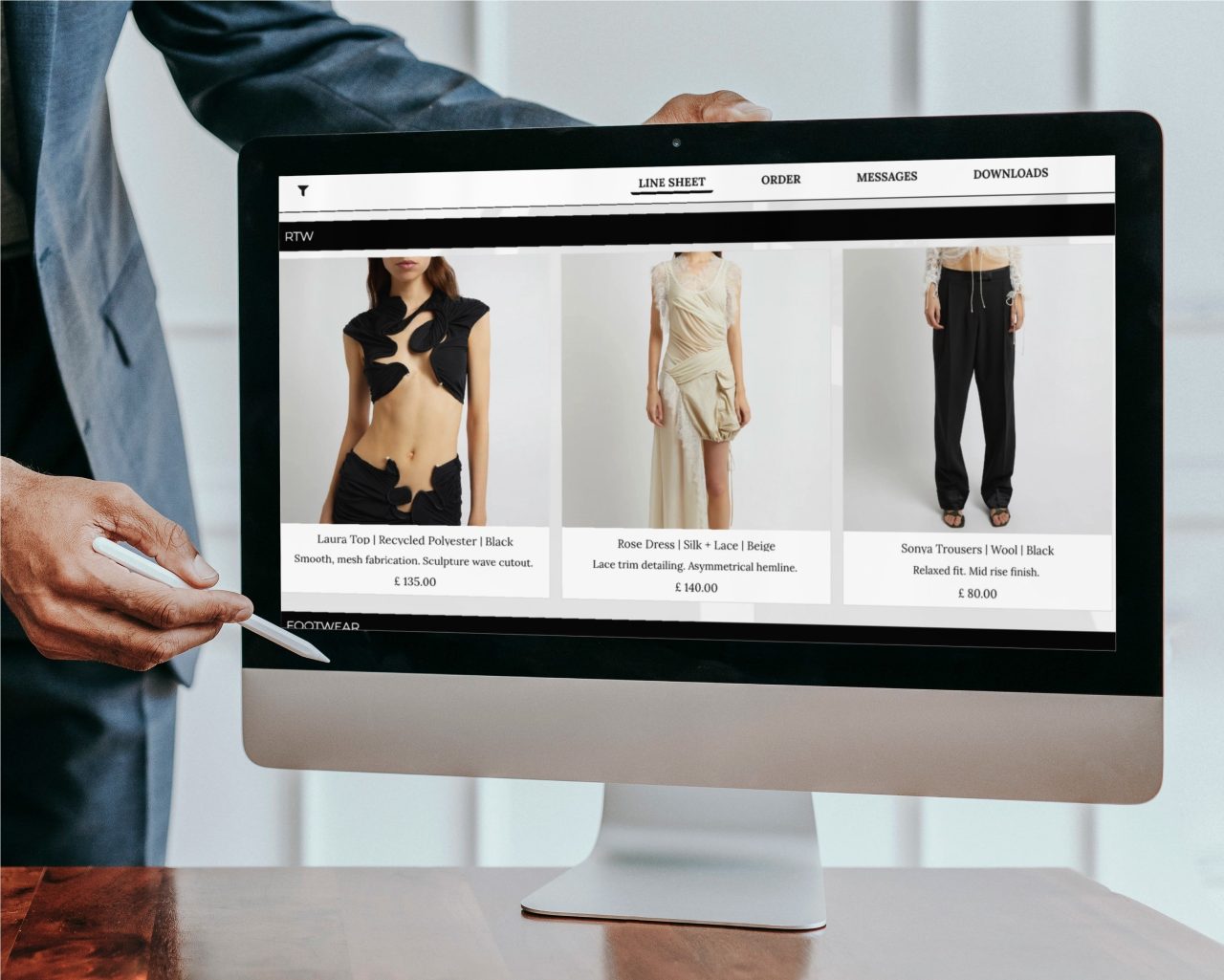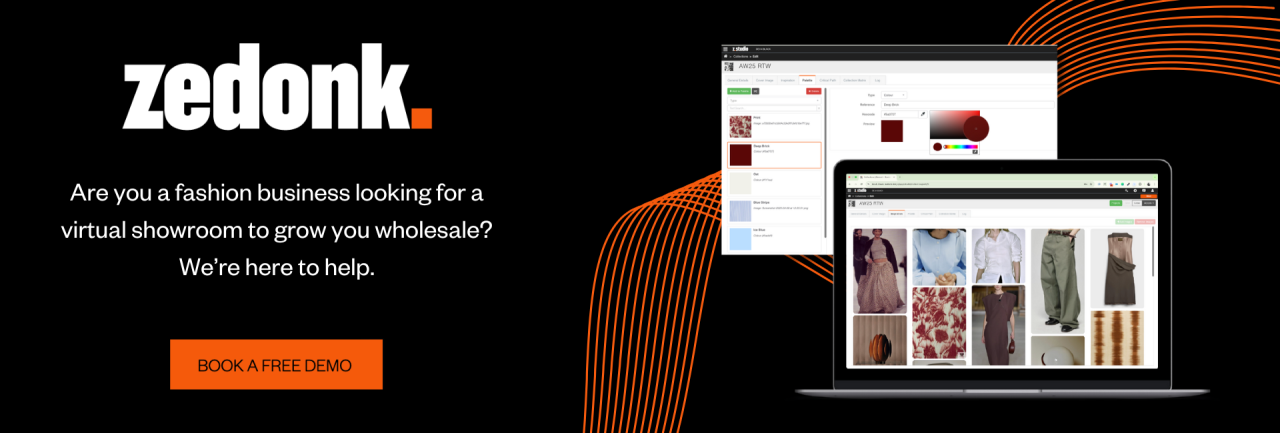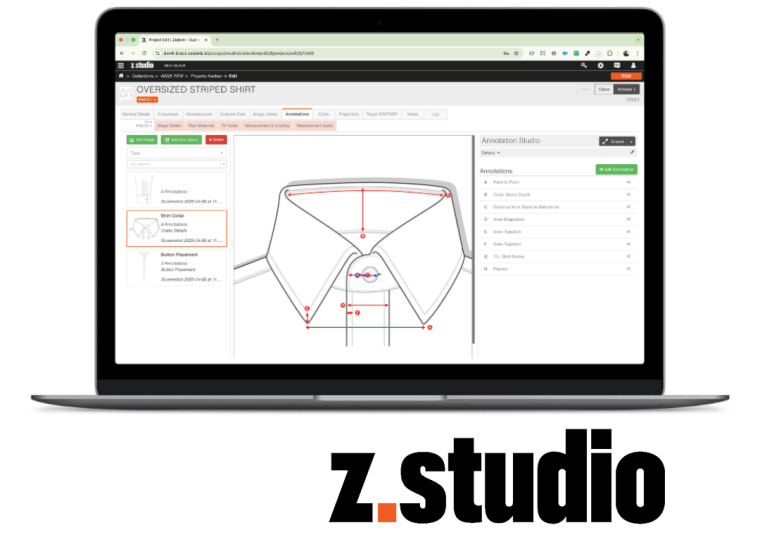There’s no denying that fashion wholesale has changed. Customers still want to touch fabric and check their garment’s fit, but they also expect quick, clear line views on their screen. That mix is where virtual showroom software pays off. It gives brands a simple way to present collections, meet buyers online, and turn interest into clean orders without flying samples around the world.
This guide shows how fashion wholesale teams can use virtual showroom software to speed sell‑ins, raise order confidence, and keep costs in check.

What a virtual showroom does for a fashion brand
A virtual showroom is a private, branded website that shows your collection to approved buyers. It holds style information, colourways, sizes, lookbook shots, and price lists, all pulled from your product records. Buyers can explore the range, build a shortlist, and place a draft order. Your sales team sees the same source of info, so conversations move fast and stay accurate.
At Zedonk, our B2B Digital Showroom is designed for this exact job. It pairs with Z.Hub ERP and Z.Studio PLM, so the images, prices, and tech details you approve upstream appear in the showroom without extra uploads. That link is the foundation that keeps the story neat and the data right.
Showcase collections without duplicating work
Designers and product managers can build a strong visual story inside virtual showroom software without creating separate files for every buyer. Curate boards by season, theme, delivery, or key account. Drag in approved images, add video if you have it, and group styles by colour or fabric. Since the showroom reads from Zedonk, there is no double entry. Update a price or a colour in the master record, and the change shows in the showroom, too.
This is especially useful for brands that limit physical samples. You can still show a complete range with detailed images, measurements, and notes pulled from the PLM. Buyers get what they need to make a decision, even if they cannot visit a studio this week.
Give buyers an interactive experience
A good virtual showroom should feel simple and quick. Buyers can filter by category, colour, fabric, or delivery window, then zoom in on the looks they like. They can pin styles, build an order, and leave comments that your team sees in real time. Add short videos to show fabric movement or a fit note from the designer. These small touches lift confidence and shorten the time from first view to commitment.
When a buyer is ready, the showroom can turn a selection into a draft order. Your team reviews it, checks stock and lead times, and confirms. The buyer sees a clear summary and has less reason to hesitate. That is how virtual showroom software helps sales lift without pushing harder.
Connect showrooms to ERP and PLM for clean handoffs
The best results come when the showroom sits on top of solid product data. Zedonk’s stack makes that easy. Z.Studio holds your tech packs, images, size and colour information. Z.Hub holds prices, stock positions, and sales orders. The B2B Digital Showroom reads from both. Approve a style in PLM and publish it. Update a price or a delivery date in ERP. The showroom reflects those changes without anyone re‑typing.
When a buyer confirms a range, your team can push the order into Sales Order Management in Z.Hub. Allocation and fulfilment follow from there. This is the practical side of virtual showroom software: fewer errors, faster handoffs, and one version of the truth from design to delivery.

Run smarter meetings and shorten decisions
A virtual appointment should feel as focused as a showroom walk‑through. Share your screen, filter to the buyer’s categories, and step through the range together. Use saved assortments for each key account so you start from a relevant set. Take notes inside the showroom instead of in separate docs. After the call, send a link to the same selection. The buyer can tweak quantities and sign off. This habit turns what used to be a long back‑and‑forth into a short, clear path to order.
If you prefer a tablet on the road, Zedonk’s B2B Sales App pairs well with the Digital Showroom. Use it for in‑person visits where you still want a clean digital recap after the meeting. For most teams, the Digital Showroom is the main hub, while the Sales App is a handy complement.
Use data to shape your next range
Virtual showroom software does more than display images. It also shows you what buyers actually do. Which styles get pinned most often? Which colourways convert? Which sizes see the highest pre‑orders by region? These signals help designers and merchandisers tune the next range. They also help sales leads plan which stories to open with.
Tie those reads back to the ERP system. Compare showroom interest with real orders and delivery performance. If a style wins attention but loses orders on price, adjust the costing next season. If a fabric video boosts conversion, make it part of your standard. Over time, these small changes add up to a line that fits your buyers better.
Cost and time savings that show up fast
Travel will always have a place, but flying every sample to every city is not the only way to sell. With virtual showroom software, you can stage early views, run previews with key accounts, and keep a long tail of follow‑up meetings alive without extra shipping. You also reduce the friction of last‑minute changes. Update a look, a price, or a delivery, and everyone sees the same update.
This cuts small costs that add up: fewer courier runs, fewer re‑prints, fewer meetings that need a second round just to fix a detail. Most of all, it reduces stress. Your team has one place to prepare, present, and track decisions.
A simple rollout plan for your team
You do not need a long project to start. Try this across one season:
- Prep your data in PLM and ERP. Tidy product names, confirm colour codes, and pick the key images that will represent each style.
- Build the showroom. Create boards by delivery window and key account. Add short videos for hero fabrics.
- Pilot with two buyers. Run a live session and send follow‑up links. Capture what helped and what caused confusion.
- Tweak and expand. Adjust filters, improve copy, and roll out to the rest of your accounts.
- Close the loop. Push confirmed selections into Sales Order Management and track fulfilment against the plan.
Each step strengthens the link between product data and sales, which is the real power of virtual showroom software.
Why choose Zedonk’s Digital Showroom
Zedonk’s B2B Digital Showroom is built for fashion wholesale. It mirrors how you actually sell, with boards, filters, and account‑specific assortments. It plugs into Z.Studio for product detail and into Z.Hub for orders and inventory, so you work from one set of facts from end to end. Add the B2B Sales App when you need a mobile companion for showroom or road appointments.
If you are ready to give buyers a clean, modern way to view and order your collection, Zedonk has what you need. Book a short demo and see how virtual showroom software can lift sell‑ins, reduce admin, and help your team focus on the work that moves the season forward.



 A New Sampling & Tech Pack Solution from Zedonk.
A New Sampling & Tech Pack Solution from Zedonk.